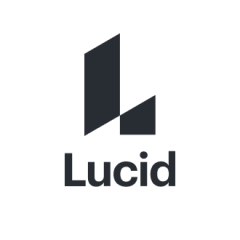What is our primary use case?
I am using it for a wide range of diagrams for network configuration, process flow, etc. I am using its web version.
How has it helped my organization?
It is good for documenting things such as processes, systems, etc. Typically, for each project, I'll start with a new file, and for each and every step, I create more sheets under the same file. It is similar to Excel where you have multiple sheets in the same file. It is an effective way for me. It is very convenient and easy to use.
It provides real-time collaboration among users so that everyone is accessing and working on the same version of a document. We typically organize a Zoom meeting at certain times, and I do screen sharing, and a few other people join in. We work together by using collaborative editing options. Not every person who has access to the collaborative option is very technical. Sometimes, they might unknowingly delete something. When more people are collaborating, they can mix things together. Such human errors will come up, but they happen because of the people who are collaborating and not because of the tool.
The ability for people to look at a diagram rather than reading through written documents saves time. The clients get the reality of what we are doing, which we consider as important. We can show what we are really working on, and they understand.
I do a lot of process flows and diagrams. It is very important for me, not only for process flows but also for network designing and other such things. It has been helpful for understanding process flows or workflows, and that's the main purpose for which I use it. I have to forward the software process or application process flow to my development team. For non-technical people, such as a client who doesn't know the technical terms, Lucidchart helps in more visualization. When I present it and explain the process, people can easily understand it. That's the main advantage of using this one. For technical people, I spent a few hours defining the process flow, and they can understand it in five minutes.
Lucidchart saved us around 90% time as compared to the other solution. When you use presentation slides, it takes so much time to create a proper design. You have to insert each and every shape, and you have to connect things properly. Moreover, the slide sizes are fixed, and you can't extend the slides, which makes the work harder, whereas, in Lucidchart, you can extend a particular sheet to whatever size you want. You can also put everything together, and it still works fine. I own a development app in which we have more than 10 modules. For all 10 modules, I'm just using a single sheet. I just extend its height, and I am able to use a single sheet for the overall process flow. So, I don't need to go slide by slide to explain what is happening. Previously, to share my slides with other people, I had to put the file in one place and then send the link. If they didn't know much about designing slides, they used to mess up everything. With Lucidchart, this doesn't happen.
What is most valuable?
I really like the drag and drop feature because it makes the work easier. It is very easy to use. All the pieces are very good. All the icons and all the fields are available in the left panel. So, I just click, drag, and then edit a piece. When I showed it to my managing director, he was very inspired, and he also got a premium account for himself.
I deal with technical sites. So, I typically use this for roster plans such as who will be on a particular project, and it has been very useful.
When it comes to network diagrams, it gives us the flexibility to design a network on the go. This flexibility matters to us, and it makes us more productive.
It makes everything easy. It is very convenient as compared to other typical solutions. It makes my work easier. I don't need so much technical knowledge or experience of a particular software. I can just click and drag.
What needs improvement?
Wireframing can be improved. For mock-ups and wireframing, only 10% of what is required is there. If they can develop this feature, it would be much better because it will then provide everything. Currently, we can design network diagrams, processes, etc., but we should also be able to do wireframing.
I design the process flow, and after the developer starts the process, I also have to design the UI. At present, I'm using another solution for wireframing or UI, but even in that, most of the icons are missing, so I have to get the icons from the internet. If Lucidchart can have the wireframing options into it, it will be a major success and helpful for us. Lucidchart already has the concept, but it does not have many options. You can select only limited options even if you have a premium subscription.
For how long have I used the solution?
I used Lucidchart as a student for two years. As a professional, I have been using it for the last one month after joining this organization.
What do I think about the stability of the solution?
It is totally fine in terms of stability.
What do I think about the scalability of the solution?
It is pretty okay. We haven't encountered any compatibility or accessibility issues so far.
Currently, we have about three employees who are maintaining the Lucidchart pack. They dedicate roughly one or two hours per day. Each one has a different role. One is handling development, one is handling the testing, and another one is handling the database and backend stuff. Their roles are IT manager, system engineer, and assistant system engineer.
It is one common license. We just share the permissions. So, we have one account, and I am the one maintaining the account. I have three other people who have fewer privileges. I share the documents with them, but they can't do much editing. They can only do limited operations.
Currently, we don't have any plans to extend its usage. After three or six months, when our initial project is rolled out, we might expand it and purchase more licenses.
How are customer service and technical support?
I have never contacted their technical support. There was no need to contact them because it is very straightforward and easy to use.
Which solution did I use previously and why did I switch?
In my organization, they were creating presentations for any kind of process flows, but they didn't have a professional look. They had to spend more time on the explanation part to help clients visualize the process. With Lucidchart, everything is in a single place, and everything is properly designed and organized. When I explain something to clients, it is easy for them to visualize and understand it.
How was the initial setup?
Its initial setup was straightforward. You just create an account and make the payment. It doesn't require any implementation strategy.
What was our ROI?
The ROI is not in terms of money, but it is in terms of productivity. Previously, to explain the process flow to developers, we had to spend hours creating the presentations. The guy who held my position previously spent almost a week designing five slides that explained the process flow. He had to spend another three to four hours explaining it to our developers, so the duration was very long. With Lucidchart, I can create the whole process flow within a day, and when I show it to the developers, they can understand within five minutes. So, I can witness its effectiveness. It is also useful when there is an occasional change in the process, which sometimes can happen once in a month.
What's my experience with pricing, setup cost, and licensing?
Its pricing is very affordable and reasonable for the features that it provides. I am using its basic plan, and for my usage, it is perfectly reasonable. It suits perfectly.
Which other solutions did I evaluate?
As a student, when I was searching for such solutions, I came across Lucidchart in Google search. I just created a trial account, and it was pretty okay. I then came to know that my university also provides premium access to Lucidchart.
In my current organization, I didn't evaluate any other products before recommending Lucidchart to my manager. I know Lucidchart for the last two years, and I thought this would be a perfect fit for us. I recommended it to my manager and showed him how it works, and that's it. He approved to go with it.
What other advice do I have?
It is very flexible and easy to use. These are the two main things about Lucidchart. Moreover, it doesn't take so much technical support. It is just click-and-drag. With some of the other solutions, you need some technical knowledge to understand how it works, whereas Lucidchart doesn't require any technical knowledge. If you have experience working with Word, PowerPoint, or Excel, you can use it easily.
I have very occasionally used Lucidchart to create database schemas or modify existing data structures. I have not used Lucidchart's ability to compare different versions of documents. I might try it in the future.
I haven't tested it with Mac. I have a Lenovo PC and an HP workstation. It works fine with both. I have also tested it with Ubuntu, and it works totally fine with that. In our organization, everyone uses Microsoft.
I would rate Lucidchart a nine out of 10. It just needs more wireframing features.
Disclosure: PeerSpot contacted the reviewer to collect the review and to validate authenticity. The reviewer was referred by the vendor, but the review is not subject to editing or approval by the vendor.










